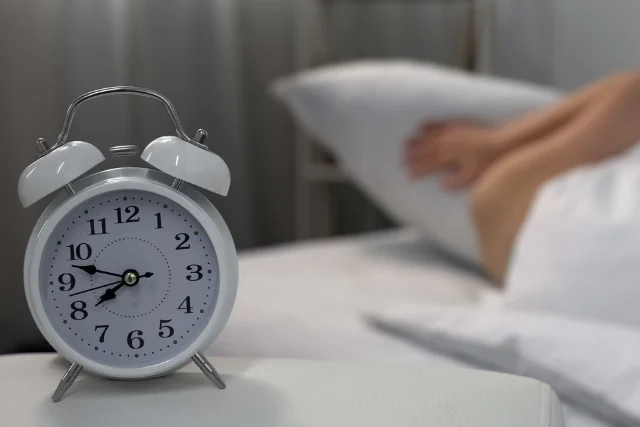Dealing with Jet Lag: Tips for Fast Recovery

Traveling across time zones can be exhilarating—new cultures, food, and experiences await. But before you dive into sightseeing or business meetings, there’s often an unwelcome travel companion: jet lag. That foggy-headed, can’t-sleep-or-stay-awake feeling is all too familiar to long-distance travelers. The good news? With a little preparation and some smart post-flight strategies, you can bounce back quickly and make the most of your trip. This guide breaks down what jet lag really is and how to recover from it fast.
What Is Jet Lag?
Jet lag is a temporary sleep disorder that occurs when your internal body clock, or circadian rhythm, is out of sync with the local time at your destination. This happens when you cross multiple time zones rapidly, especially flying eastward. Symptoms often include:
- Fatigue and drowsiness during the day
- Trouble falling or staying asleep at night
- Irritability or mood swings
- Difficulty concentrating
- Digestive problems like constipation or diarrhea
Jet lag can affect anyone, but its severity varies based on factors like age, direction of travel, and number of time zones crossed.
How Long Does Jet Lag Last?
Generally, jet lag lasts about one day per time zone crossed. For example, if you fly from New York to Paris (a 6-hour time difference), you might need 5–6 days to fully adjust. However, some people recover more quickly, especially if they follow proactive strategies before, during, and after travel.
Why Jet Lag Hits Harder Traveling East
Traveling eastward shortens your day, while traveling westward lengthens it. Our bodies tend to handle lengthened days better than shortened ones. That’s why flying from Los Angeles to Tokyo might feel tougher than flying the other way. Understanding this can help you adjust expectations and plan accordingly.
Pre-Flight Tips to Prevent Jet Lag
1. Gradually Adjust Your Sleep Schedule
Start shifting your sleep time a few days before your flight. If you’re traveling east, go to bed and wake up earlier; if west, do the opposite. Even a one-hour change can help your internal clock adapt.
2. Book Flights That Arrive in the Daytime
Arriving when it’s light out gives your body cues to stay awake and start adjusting. Natural sunlight is a powerful tool to reset your circadian rhythm.
3. Get Plenty of Rest Before Departure
Avoid flying out sleep-deprived. While it’s tempting to stay up late to “sleep on the plane,” being well-rested gives you a better chance of managing jet lag effectively.
4. Stay Hydrated
Dehydration can intensify the symptoms of jet lag. Drink water regularly before and during your flight, and limit caffeine and alcohol which can disrupt sleep.
5. Choose Seats Strategically
If possible, choose a window seat where you can control light exposure and avoid being disturbed. A good sleep on the plane can significantly reduce jet lag symptoms.
In-Flight Strategies to Reduce Jet Lag
1. Adjust Your Watch to Destination Time
This simple psychological trick helps your brain begin to adjust by aligning your mindset with your new time zone.
2. Sleep or Stay Awake According to Destination Time
If it’s nighttime where you’re going, try to sleep on the plane. Use a neck pillow, noise-canceling headphones, and an eye mask to block out distractions.
3. Move Around the Cabin
Periodic stretching and short walks down the aisle improve circulation and reduce feelings of sluggishness, which can help prevent post-flight fatigue.
4. Eat Lightly and Wisely
Heavy meals can throw off your digestive system. Opt for lighter, protein-rich foods and avoid greasy or overly processed meals.
5. Avoid Excessive Screen Time
Blue light from screens can mess with your melatonin production, making it harder to adjust. Try reading a book or listening to calming music instead.
Post-Flight Recovery Tips for Jet Lag
1. Get Outside Into Natural Light
Sunlight is the most powerful cue for resetting your biological clock. Spend time outdoors shortly after arriving, especially in the morning if you’re traveling east.
2. Stay Awake Until a Reasonable Bedtime
As tempting as it might be to nap, try to push through and sleep according to the local schedule. If needed, limit naps to 20–30 minutes in the early afternoon.
3. Use Melatonin Supplements Wisely
Melatonin can help signal to your body that it’s time to sleep. A small dose (0.5–3 mg) taken one hour before your intended bedtime can be helpful, especially for eastward travel. Always consult your doctor first.
4. Eat According to Local Time
Resisting the urge to snack at odd hours helps your body align with the new time zone. Stick to meal times based on your destination, even if you’re not hungry.
5. Stay Hydrated and Avoid Alcohol
Keep drinking water, especially in dry environments or warmer climates. Alcohol and caffeine can disrupt your sleep patterns, so go easy in the first few days after arrival.
6. Consider a Short Nap If Absolutely Necessary
If you’re struggling to stay awake, a power nap of 20–30 minutes can refresh you without interfering with your nighttime sleep.
Jet Lag and Business Travel
Business travelers often face tight schedules with little recovery time. Here are a few extra tips tailored to professionals:
- Schedule important meetings 24–48 hours after arrival if possible.
- Use blackout curtains and white noise apps in your hotel room.
- Avoid scheduling critical tasks during early mornings or late evenings right after arrival.
- Plan downtime—even an hour can help you reset mentally and physically.
Tech Tools That Help Beat Jet Lag
1. Jet Lag Rooster – This free tool creates a personalized plan based on your itinerary to gradually shift your sleep schedule.
2. Timeshifter App – Used by astronauts and elite athletes, this app offers science-backed strategies to minimize jet lag, including light exposure and melatonin timing.
3. Smartwatches and Sleep Trackers – Devices like Fitbit and Oura Ring can monitor your sleep quality and recovery, helping you know when to rest or push through.
Foods That Support Circadian Rhythm
Some foods naturally support your body’s clock:
- Tart cherries – A natural source of melatonin
- Bananas – Rich in magnesium and potassium for better sleep
- Oats and almonds – Promote serotonin production
- Warm herbal teas – Chamomile or valerian root can calm your nervous system before bed
When to Seek Medical Advice
Jet lag is typically manageable, but if you experience persistent sleep disturbances, extreme fatigue, or difficulty functioning, consult a healthcare provider. Frequent travelers, especially those crossing multiple time zones weekly, may benefit from personalized medical strategies.
FAQs
How long does jet lag typically last?
It usually takes about one day per time zone crossed to fully adjust. So, a 5-hour time difference could take about 5 days to recover from completely.
Is jet lag worse when flying east or west?
Most people find jet lag worse when flying east because it’s harder to advance your internal clock than delay it.
Can melatonin really help with jet lag?
Yes, melatonin can be effective if used correctly—ideally taken 30 minutes to an hour before your desired bedtime at your destination.
Should I sleep on the plane or stay awake?
It depends on your destination’s time zone. Try to sleep if it’s nighttime at your destination, and stay awake if it’s daytime.
Does drinking coffee help with jet lag?
Caffeine can help keep you alert during the day, but avoid it 6–8 hours before bedtime as it can interfere with sleep.
What should I eat to recover from jet lag?
Light, nutritious meals with sleep-supportive foods like cherries, almonds, and bananas can help regulate your body’s clock.
Do kids experience jet lag the same way as adults?
Yes, though children may adjust quicker due to more adaptable sleep cycles. Still, they may show irritability or appetite changes.
Can I avoid jet lag completely?
You might not avoid it 100%, but with preparation—adjusting your sleep schedule, hydrating, and getting sunlight—you can significantly reduce symptoms.
Image Source: Canva








